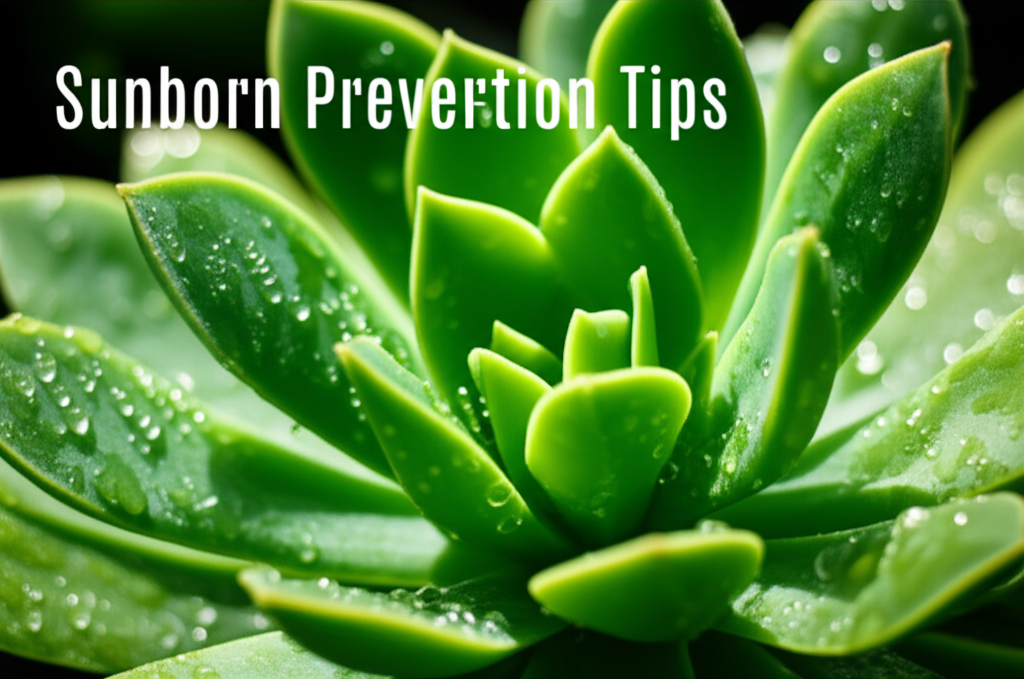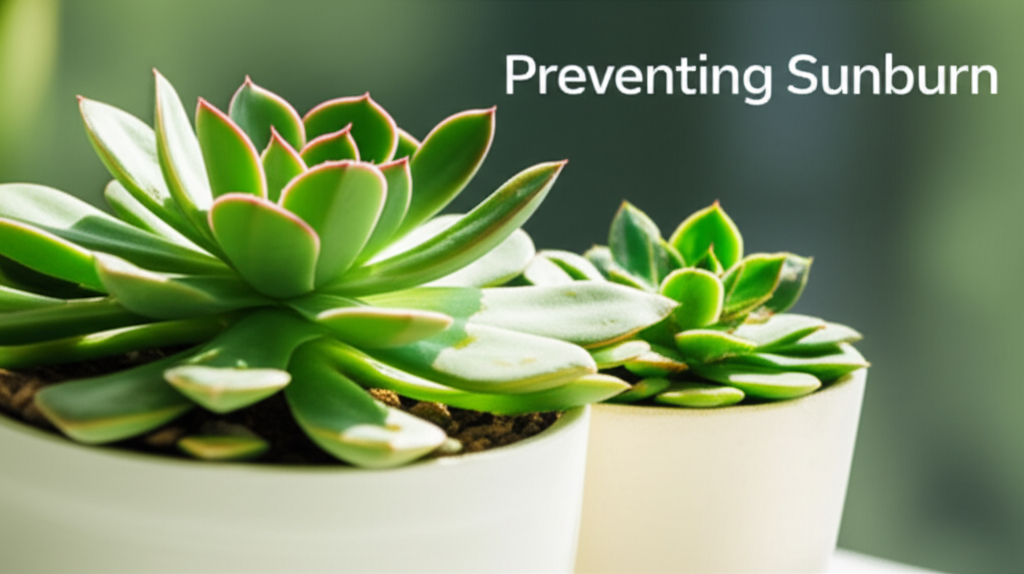Understanding Ice Plant Sunburn: The Crimson Blight
Ice plants, scientifically known as Mesembryanthemums, are renowned for their captivating, jewel-like foliage that glistens in the sun. These succulents, native to arid regions, are inherently adapted to intense sunlight. However, even these hardy plants can fall victim to sunburn, particularly when introduced to conditions that differ significantly from their native environment or when experiencing sudden environmental shifts. Sunburn on ice plants manifests as a discolored patch, often turning reddish, brown, or even white. This discoloration is a sign of cellular damage, where the plant’s tissues have been overwhelmed by excessive ultraviolet (UV) radiation and heat. While some degree of color change can be a natural response, severe or widespread discoloration indicates a problem that needs addressing to prevent further damage and preserve the plant’s health and aesthetic appeal.
Why Do Ice Plants Get Sunburned?
Several factors contribute to ice plants developing sunburn:
- Sudden Exposure to Intense Sunlight: Perhaps the most common cause. Plants that have been accustomed to shadier conditions, such as those grown indoors or under nursery shade cloth, are highly susceptible when moved abruptly into full, direct sunlight.
- Environmental Changes: Seasonal shifts can play a role. As summer progresses and the sun’s intensity increases, even plants that have been outdoors for a while can experience sunburn if they haven’t acclimatized gradually.
- Improper Watering: While succulents are drought-tolerant, inconsistent or insufficient watering can stress the plant, making it more vulnerable to sun damage. Dehydrated cells are less resilient to heat and UV radiation.
- Potting Medium: Pots, especially dark-colored ones, can absorb and retain a significant amount of heat. This can lead to the roots overheating, which indirectly affects the plant’s ability to cope with direct sun.
- Geographical Location: Regions with high UV indexes and intense summer heat are naturally more prone to causing sunburn in plants, including ice plants, if proper precautions are not taken.
- Recent Propagation or Repotting: Plants that have recently been propagated from cuttings or repotted are in a vulnerable state. Their root systems may not be fully established, hindering their ability to absorb moisture and nutrients effectively to combat environmental stress.
Key Facts & Comparison: Ice Plant Varieties and Sun Tolerance

It’s important to note that not all ice plants are created equal in their sun tolerance. While generally sun-loving, some varieties are more robust than others. Understanding these nuances can help in selecting the right plants for your environment and implementing appropriate care strategies.
| Ice Plant Variety | Typical Sun Tolerance | Foliage Characteristics | Primary Risk Factors for Sunburn |
|---|---|---|---|
| Delosperma cooperi (Hardy Ice Plant) | High. Tolerates full sun and heat. | Succulent, green leaves, often with a reddish tint in high light. | Sudden exposure after shade, prolonged extreme heat without adequate hydration. |
| Lampranthus spectabilis (Showy Ice Plant) | Moderate to High. Prefers full sun but can scorch in extreme midday heat without protection. | Fleshy, triangular leaves. | Intense midday sun in hot climates, sudden relocation to full sun. |
| Aptenia cordifolia (Heartleaf Ice Plant) | Moderate. Enjoys full sun to partial shade. Can burn in harsh afternoon sun. | Heart-shaped, fleshy leaves. | Harsh afternoon sun, especially in hotter climates. |
| Mesembryanthemum crystallinum (Common Ice Plant) | Moderate. Prefers full sun but benefits from some afternoon shade in very hot regions. | Large, succulent leaves covered in reflective bladders. | Extreme heat, especially combined with strong afternoon sun. |
Recognizing the Signs of Sunburn
Early detection is crucial for effective sunburn prevention and treatment. Watch out for the following visual cues:
- Discoloration: The most common sign is a shift in color, typically from green to shades of pink, red, orange, or brown. In severe cases, patches can turn white or bleached-looking.
- Wilting: Even though they are succulents, severely stressed ice plants may appear wilted, with their leaves drooping. This is often accompanied by the tell-tale discoloration.
- Tissue Necrosis: In advanced stages, the affected areas may become dry, brittle, and papery, eventually dying off.
- Leaf Edge Browning: Often, the damage begins at the tips or edges of the leaves.
Effective Ice Plant Sunburn Prevention Techniques
Proactive measures are far more effective than reactive ones when it comes to protecting your ice plants from sunburn. The goal is to create an environment that mimics their natural habitat while also accounting for the specific microclimate of your garden or home.
Gradual Acclimatization: The Slow and Steady Approach
This is arguably the most critical technique, especially for plants moved from an indoor or shaded environment to the outdoors.
- Week 1: Partial Shade: Begin by placing your ice plant in a location that receives dappled sunlight or only a few hours of morning sun.
- Week 2: Increased Exposure: Gradually increase the duration of direct sunlight exposure. Move the plant to a spot where it gets morning sun and some afternoon shade.
- Week 3: Morning Sun: Allow the plant to receive direct morning sun for a longer period, perhaps 4-6 hours, with shade during the hottest part of the day.
- Week 4: Full Sun (with caution): If the plant is showing no signs of stress, you can gradually introduce it to full sun. Continue to monitor closely for any signs of discoloration.
Strategic Placement: Location, Location, Location
Where you place your ice plant can make a significant difference.
- Morning Sun, Afternoon Shade: For most ice plant varieties, especially in hotter climates, an east-facing location that provides ample morning sun and protection from the harsh afternoon rays is ideal.
- Consider Container Placement: If your ice plant is in a pot, consider its location. Moving pots to follow the sun or placing them under the protective canopy of larger plants or structures can be beneficial.
- Avoid Reflected Heat: Be mindful of surfaces near your ice plants that reflect heat, such as light-colored walls or paving stones. These can intensify the sun’s impact.
Watering Wisely: The Hydration Backbone
While ice plants are drought-tolerant, proper hydration is key to their resilience, especially during hot, sunny periods.
- Water deeply and infrequently: Allow the soil to dry out slightly between waterings. When you water, ensure it penetrates the entire root ball.
- Water in the morning: This allows the plant to hydrate before the heat of the day and helps prevent fungal diseases that can thrive in damp conditions overnight.
- Check soil moisture: Don’t rely on a schedule. Stick your finger about an inch into the soil. If it feels dry, it’s time to water.
- Consider the pot: Terracotta pots dry out faster than plastic or glazed pots. Adjust your watering accordingly.
Soil and Drainage: The Foundation for Health
Well-draining soil is paramount for all succulents, including ice plants.
- Use a gritty potting mix: A mix formulated for succulents and cacti, with good aeration and drainage, is essential. You can amend regular potting soil with perlite or coarse sand.
- Ensure pot drainage: All containers must have drainage holes to prevent waterlogged roots, which can exacerbate sun stress and lead to root rot.
Shade Cloth and Temporary Coverings: Providing a Break
When temperatures soar or for particularly sensitive or newly planted ice plants, temporary shading can be a lifesaver.
- Shade cloth: Installing shade cloth (available in various densities, e.g., 30-50%) over vulnerable plants can significantly reduce the intensity of sunlight without completely blocking it. This is particularly useful during the peak of summer.
- Temporary structures: During heatwaves, you can create temporary shade by using umbrellas, awnings, or even lightweight fabric draped over stakes. Remember to remove these once the extreme heat has passed.
Mulching: The Unsung Hero
A layer of mulch can help regulate soil temperature and retain moisture.
- Use inorganic mulch: For succulents, inorganic mulches like gravel, pebbles, or decomposed granite are often preferred as they don’t hold excessive moisture and improve aeration.
- Apply around the base: Leave a small gap around the stem of the plant to prevent rot.
Post-Sunburn Care and Recovery
If your ice plant does show signs of sunburn, don’t despair. With proper care, many can recover.
Pruning Damaged Areas
Removing the burnt foliage can help the plant redirect energy to healthy growth and prevent the spread of damage.
- Use clean, sharp tools: Sterilize your pruning shears or knife with rubbing alcohol to prevent the spread of disease.
- Cut back to healthy tissue: Trim away all discolored or damaged parts of the leaves or stems. Cut back until you see healthy green tissue.
- Dispose of debris: Remove pruned material from the vicinity of the plant.
Adjusting Care Post-Damage
After pruning, it’s crucial to adjust your care routine to support recovery.
- Provide temporary shade: If the sunburn was severe, move the plant to a location with bright, indirect light or dappled shade for a few weeks.
- Be mindful of watering: Continue to water appropriately, ensuring the soil is not waterlogged but also not completely dry.
- Avoid fertilizing: Do not fertilize a stressed plant, as this can cause further damage. Wait until new, healthy growth appears.
Troubleshooting Common Ice Plant Sunburn Issues
Even with the best intentions, some situations can lead to unexpected sunburn.
| Problem | Potential Cause | Solution |
|---|---|---|
| New leaves are developing white or pinkish patches. | Plant is not fully acclimatized to current sunlight levels. | Provide temporary shade during the hottest part of the day. Gradually increase sun exposure over several weeks. |
| Entire plant appears wilted and discolored after a heatwave. | Overheating due to intense sun and possibly insufficient watering. | Move to a shadier spot. Water deeply if soil is dry. Consider misting the foliage in the early morning to cool them down. |
| Brown, crispy tips on leaves, but the rest of the leaf is green. | Likely minor sunburn or salt buildup from fertilizer or water. | Ensure adequate watering. If fertilizing, flush the soil with plain water. Prune tips if unsightly. |
| Plants in pots seem to be burning more easily than those in the ground. | Pots, especially dark ones, absorb and retain heat, cooking the roots. | Use lighter-colored pots, or double-pot by placing the succulent’s pot inside a larger decorative pot. Place pots on heat-reflecting surfaces or in partial shade during peak hours. |
Pros and Cons of Different Prevention Strategies
Each method of prevention has its advantages and disadvantages, and the best approach often involves a combination of techniques.
| Prevention Technique | Pros | Cons |
|---|---|---|
| Gradual Acclimatization | Highly effective, promotes long-term resilience, natural adaptation. | Requires time and consistent monitoring, not practical for sudden changes. |
| Strategic Placement | Simple, cost-effective, leverages natural environmental factors. | May limit aesthetic planting arrangements, requires understanding of sun patterns. |
| Proper Watering | Essential for overall plant health and stress management. | Can be tricky to master for succulents, over/underwatering can cause other issues. |
| Shade Cloth/Temporary Coverings | Provides immediate protection, highly effective for extreme conditions. | Can be unsightly, may require installation/removal, can reduce airflow if not used properly. |
| Mulching | Regulates soil temperature, conserves moisture, improves soil structure. | Inorganic mulch may not be suitable for all aesthetic preferences, organic mulch can retain too much moisture for succulents. |
Conclusion: Cultivating a Sun-Kissed, Healthy Ice Plant
Preventing ice plant sunburn is about understanding the plant’s needs and the environmental forces it faces. By implementing a combination of gradual acclimatization, strategic placement, and consistent, appropriate care, you can ensure your ice plants thrive, displaying their vibrant colors without the damaging crimson blight of sunburn. Observing your plants, responding to their subtle cues, and adapting your approach based on your specific climate will lead to the most successful and rewarding cultivation of these remarkable succulents.


